
Scott Adams is an American entrepreneur, computer programmer, and video game designer. He co-founded, with then-wife Alexis, Adventure International in 1979. The company developed and published video games for home computers. The cornerstone products of Adventure International in its early years were the Adventure series of text adventures written by Adams.
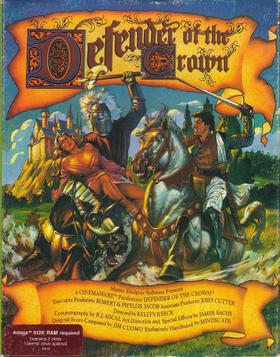
Defender of the Crown is a strategy video game designed by Kellyn Beeck. It was Cinemaware's first game, and was originally released for the Commodore Amiga in 1986, setting a new standard for graphic quality in home computer games.

Sabre Wulf is an action-adventure game released by British video game developer Ultimate Play the Game for the ZX Spectrum home computer in 1984. The player navigates the pith-helmeted Sabreman through a 2D jungle maze while collecting amulet pieces to bypass the guardian at its exit. The player does not receive explicit guidance on how to play and is left to decipher the game's objectives through trial and error. Sabreman moves between the maze's 256 connected screens by touching the border where one screen ends and another begins. Each screen is filled with colourful flora, enemies that spawn at random, and occasional collectibles.
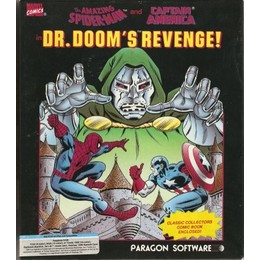
The Amazing Spider-Man and Captain America in Dr. Doom's Revenge! is a side-scrolling video game starring Marvel Comics' superheroes Spider-Man and Captain America battling a host of supervillains led by Doctor Doom. The player alternately controls Spider-Man and Captain America; the character being controlled switches after each battle.
Questprobe is a trilogy of graphic adventure video games featuring Marvel Comics characters. The three games are Questprobe featuring The Hulk, Questprobe featuring Spider-Man and Questprobe featuring Human Torch and Thing.

Skool Daze is an open world action-adventure game released by Microsphere in 1984 for the ZX Spectrum and ported to the Commodore 64 the following year. It was written by David Reidy, with graphics designed by Keith Warrington. The game was commercially and critically successful, and praised for its original concept. It has since been regarded as one of the pioneers of the sandbox game genre.

Questprobe: Featuring Spider-Man is the second video game in the Questprobe series.
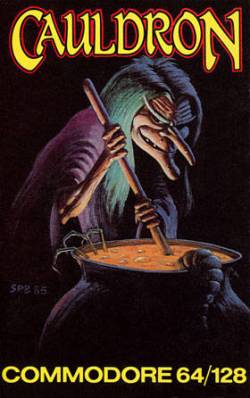
Cauldron is a video game developed and published by British developer Palace Software in 1985 for the ZX Spectrum, Commodore 64, and Amstrad CPC home computers. It contains both platform game and horizontally scrolling shooter sections. Players control a witch who aims to become the "Witch Queen" by defeating an enemy called the "Pumpking".

Spindizzy is an isometric video game released for several 8-bit home computers in 1986 by Electric Dreams Software. It combines action and puzzle video game elements. Players must navigate a series of screens to explore a landscape suspended in a three-dimensional space. Development was headed by Paul Shirley, who drew inspiration from Ultimate Play the Game games that feature an isometric projection.

The Heroes of Karn is a 1983 adventure game written by Ian Gray. It was released by Interceptor Micros for the Commodore 64, Amstrad CPC and ZX Spectrum. Music was written by Chris Cox. The Spectrum and Amstrad versions were adapted by David M. Banner with graphics by Terry Greer. A sequel, Empire of Karn, was released in 1985 on the Commodore 64.

Voodoo Castle is a text adventure and is the fourth in the series of adventure games designed by Scott Adams. The game was written by his wife Alexis Adams. The game was published by Adventure International in 1979. It was available for the VIC-20, the Commodore 64, Apple II, and other contemporary computers.
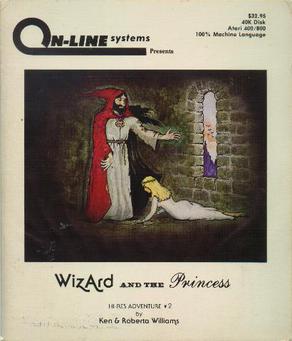
Wizard and the Princess is a graphic adventure game written for the Apple II and published in 1980 by On-Line Systems. It is the second installment in the Hi-Res Adventures series after Mystery House. Unlike its predecessor, which featured monochrome drawings, Wizard and the Princess introduced color graphics. Ports for the Atari 8-bit computers and Commodore 64 were released in 1982 and 1984 respectively. The 1982 self-booting disk version for IBM PC compatibles was renamed Adventure in Serenia.
Adventure International was an American video game publishing company that existed from 1979 until 1986. It was started by Scott and Alexis Adams. Their games were notable for being the first implementation of the adventure genre to run on a microcomputer system. The adventure game concept originally came from Colossal Cave Adventure which ran strictly on large mainframe systems at the time.
An adventure game is a video game genre in which the player assumes the role of a protagonist in an interactive story, driven by exploration and/or puzzle-solving. The genre's focus on story allows it to draw heavily from other narrative-based media, such as literature and film, encompassing a wide variety of genres. Most adventure games are designed for a single player, since the emphasis on story and character makes multiplayer design difficult. Colossal Cave Adventure is identified by Rick Adams as the first such adventure game, first released in 1976, while other notable adventure game series include Zork, King's Quest, Monkey Island, Syberia, and Myst.
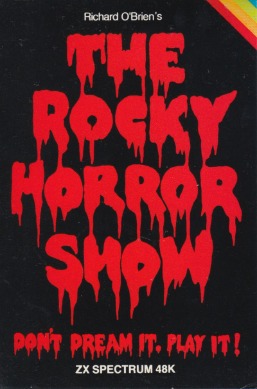
The Rocky Horror Show is a video game, based on the musical of the same name, it was developed and published by CRL Group. It was released for Apple II, Commodore 64, Commodore 128, ZX Spectrum, and Amstrad CPC created by the CRL Group PLC.

Questprobe featuring Human Torch and the Thing is the third and final video game in the Questprobe series.
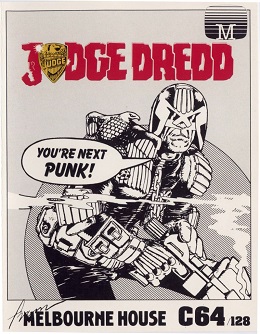
Judge Dredd is a platform shoot 'em up video game based on the character of the same name. It was developed by Beam Software and published by Melbourne House. It was released in Europe in 1986, for Commodore 64 and ZX Spectrum.

Judge Dredd is a 1991 platform shoot 'em up video game based on the character of the same name. It was developed by Random Access and published by Virgin Mastertronic. It was released in Europe in 1991, for the Amiga, Atari ST, Commodore 64, and ZX Spectrum. Critics found the gameplay repetitive.
















